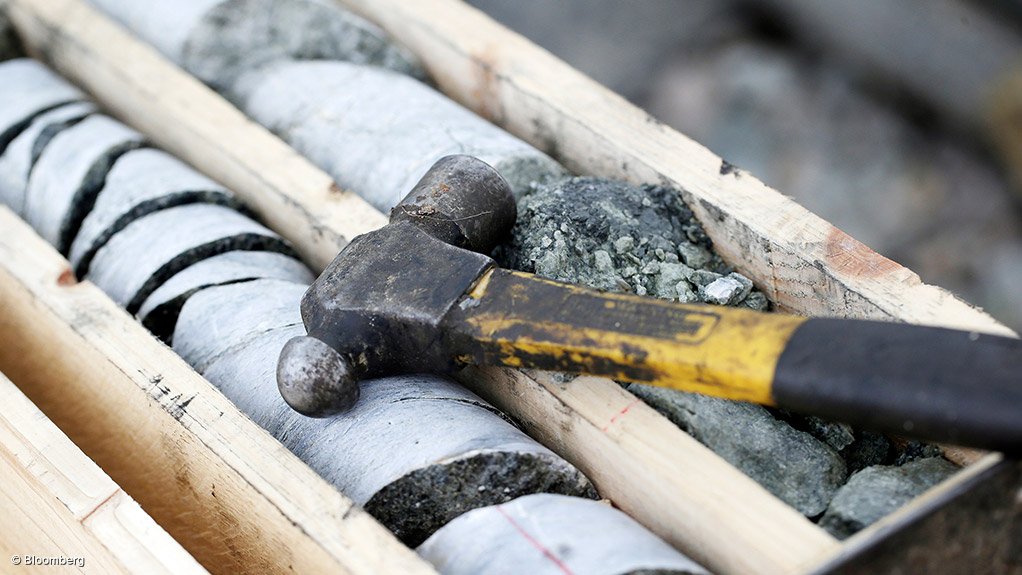JOHANNESBURG (miningweekly.com) – Boosted by increased exploration efforts in the gold and zinc sectors, the global nonferrous exploration budget is up in 2017 – for the first time since 2012 – by more than 14%, year-on-year, to $7.95-billion, according to new analysis by S&P Global Market Intelligence.
The twenty-eighth edition of the firm’s 'Corporate Exploration Strategies' (CES) report reveals that global gold budgets are up 22% year-on-year, while zinc-focused producers and junior explorers have boosted the zinc budget by 29% year-on-year to $489-million, based on improved zinc prices since early 2016.
“We know that the juniors have endured the worst of the downturn since 2012, accounting for most of the 40% drop in the number of active explorers over the past five years. However, the new CES budget data indicate that, among all company types, the surviving juniors are making a strong comeback in 2017,” says S&P Global Market Intelligence metals and mining research associate director Mark Ferguson.
He adds that junior explorers have increased their aggregate exploration budget by 23% year-on-year, including a 41% increase in gold-only allocations.
The CES report further highlights that major producing companies also increased their budgets in 2017, allocating 17% more for exploration than a year ago. As a group, the majors still dominate the exploration sector's efforts with almost 54% of the global budget, despite a faster rate of growth among the pure junior explorers.
“We expect both of these groups, which collectively account for more than 80% of global exploration budgets, to continue increasing their exploration efforts well into 2018,” says Ferguson, adding that sustained market interest will probably benefit juniors the most, as it will allow for their aggregate budget to grow at a faster pace than the producers' budget.
“As the industry rebound gains traction, we expect a similar pace of increases in 2018 budgets,” he notes.
EXPLORATION STRENGTH IN LATIN AMERICA
Continuing to capitalise on its geological wealth, Latin America remains the biggest draw for exploration efforts, with the region's aggregate budget increasing 20% year-on-year to almost $2.4-billion in 2017.
Europe and most of mainland Asia remains the second most attractive region for exploration efforts, drawing in 9% more allocations than in 2016, followed by Canada, Africa, Australia, the US and South-East Asia.
Perennial mining centres Canada, Australia and the US remain the top exploration countries in 2017, with Canada recording a 12% year-on-year increase in budgets, and Australia and the US both increasing their exploration budgets by 19%.
Still, Latin American countries dominate regionally, featuring half of the top ten most popular exploration destinations, namely Chile, Peru, Mexico and Argentina, shiftingthe Democratic Republic of the Congo into tenth place.
RISK-SHY INVESTORS
As the CES series has documented over the past few years, exploration efforts have been increasingly focused at or near operating mines, which entail the lowest risk among targets.
The data from the latest report show that the mine-site share (37%) of the global budget has risen above both the late-stage share (36%) and the grassroots share (27%) for the first time since the CES series began in 1989, the swing away from grassroots made worse since 2012 by the collapse in market investment in junior explorers and sharp spending cuts by the major producers.
“Although improved market sentiment over the past 18 months seems to have slowed the decline in grassroots' share of budgets in 2017, another year of increase in the mine-site share reflects a near-term focus by many producers, as well as a persisting climate of risk aversion,” concludes Ferguson.
S&P Global Market Intelligence’s 2017 exploration data and analysis are based on information collected from almost 3 500 mining and exploration companies worldwide, of which more than 1 500 had exploration budgets for 2017. The companies (each budgeting at least $100 000) budgeted a total of $7.95-billion for nonferrous exploration in 2017. Including an estimate for budgets that could not be obtained, the 2017 worldwide exploration budget totals $8.5-billion.
Since mid-2016, the mining sector has gradually improved in attractiveness as an investment option. An uptick in financing levels for miners over the past 18 months — especially among the junior explorers — has been driven by improved market conditions and stronger metals prices.
Edited by: Creamer Media Reporter
EMAIL THIS ARTICLE SAVE THIS ARTICLE
ARTICLE ENQUIRY
To subscribe email subscriptions@creamermedia.co.za or click here
To advertise email advertising@creamermedia.co.za or click here













